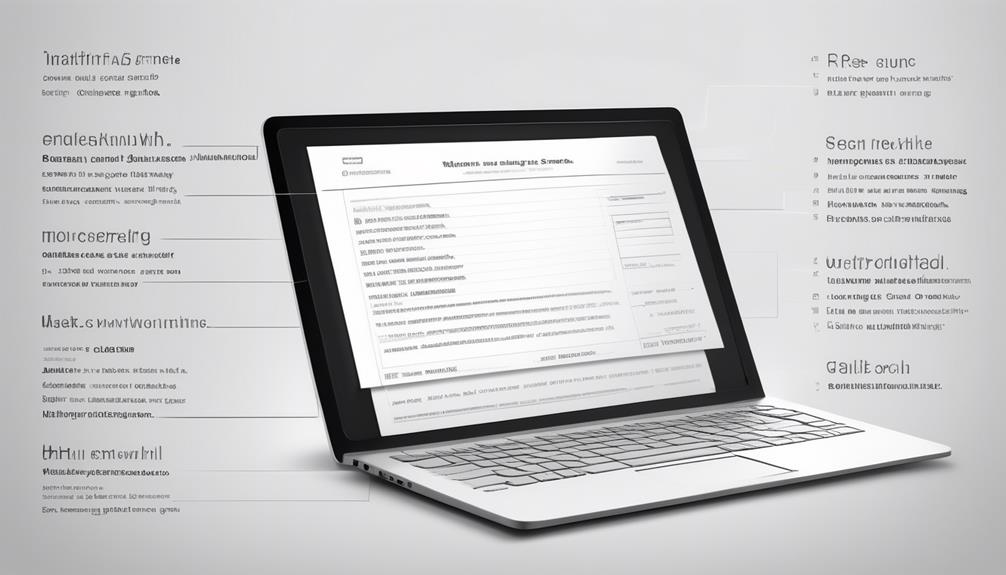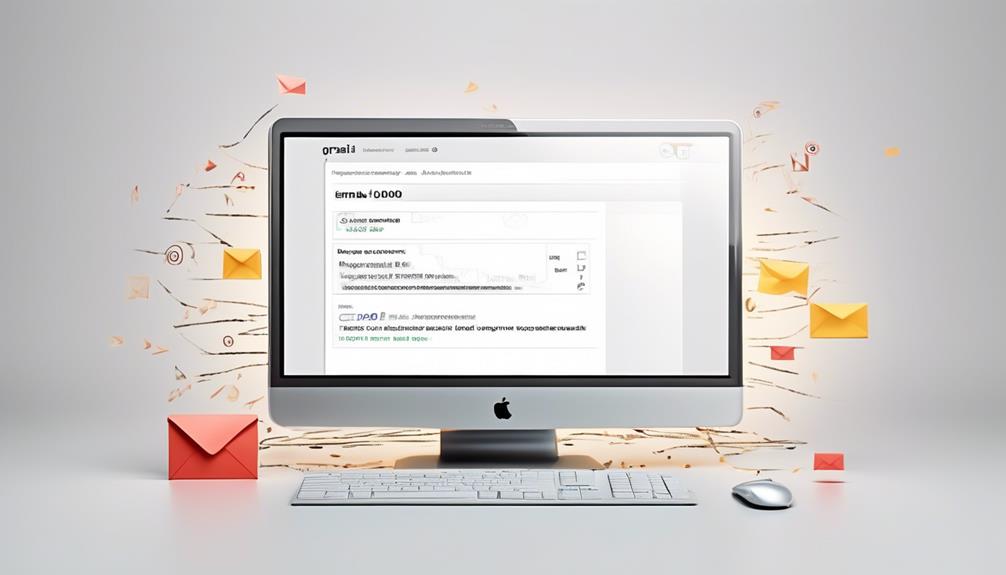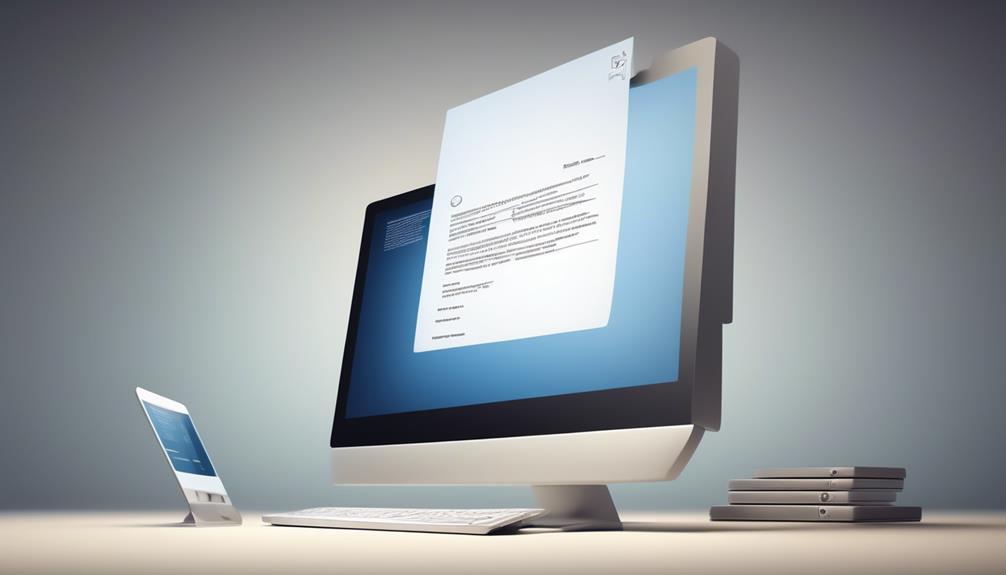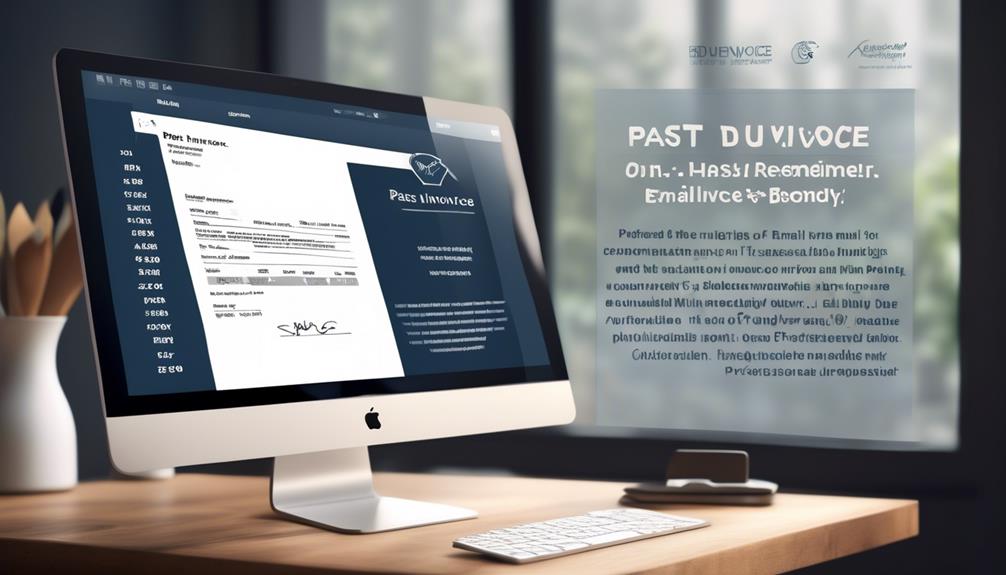Crafting emails in German involves maneuvering through the complexities of both formal and informal language, which might appear daunting at first. Nevertheless, grasping the subtleties of German email etiquette is essential for successful communication.
From addressing the recipient to choosing the appropriate greetings, each aspect plays a significant role in crafting a well-received email.
Join us as we explore the essential elements of writing email in German, ensuring your messages reflect professionalism and cultural awareness.
Key Takeaways
- Distinguishing between formal and informal language is important in German email writing.
- Using 'Sie' and 'Ihr(e)' conveys respect in formal emails.
- Address recipients by their last name or appropriate title in formal emails.
- Begin salutations for formal emails with 'Sehr geehrter Herr/Frau' followed by the recipient's last name.
Formal Vs. Informal Email Etiquette
When composing emails in German, it's essential to carefully distinguish between formal and informal language to adhere to proper etiquette. In German email writing, the choice between formal and informal language reflects the level of respect and familiarity with the recipient.
When crafting a formal email in German, it's crucial to address the person using 'Sie' and 'Ihr(e)' to convey respect. Furthermore, addressing recipients by their last name or appropriate title is customary for formal emails, aligning with the formal manner valued in German society. The salutation for formal emails typically begins with 'Sehr geehrter Herr/Frau' followed by the recipient's last name.
Conversely, informal emails in German allow for a more relaxed tone, often commencing with 'Hallo' or 'Liebe(r)' followed by the recipient's first name. The closing for formal emails should be 'Mit freundlichen Grüßen', whereas informal emails may conclude with 'Viele Grüße'.
Mastering the distinction between formal and informal email etiquette is integral to developing proficient language skills and demonstrating cultural awareness in German communication.
Crafting the Email Body

Moving from the distinctions of formal and informal email etiquette in German to the crafting of the email body, it's imperative to maintain a nuanced understanding of formality and politeness levels in communication. In the context of formal German email writing, crafting the email body requires careful attention to detail. In a formal society like Germany, cultural differences play a significant role in shaping communication norms, especially in a formal setting such as business correspondence.
When crafting the email body for a formal German email, it's crucial to begin with an appropriate salutation and greeting based on the level of formality. Furthermore, starting the email body with the correct form of address and adjective endings is essential to convey respect and politeness. Clearly communicating the purpose and expectations in a reserved and polite manner is also vital in formal German email writing. It's important to use appropriate language and tone depending on the formality and the relationship with the recipient.
Additionally, being mindful of grammar mistakes and employing a level of formality that aligns with the nature of the communication is paramount.
Addressing and Greetings in German
Addressing and greeting in German requires careful attention to the use of formal and informal pronouns, as well as the appropriate salutations and closings based on the level of formality in the communication. In German, the use of 'Sie' signifies formal address, while 'du' is used for informal situations. When writing a formal email in German, it is essential to address the recipient using their last name or title and last name. For instance, 'Sehr geehrter Herr' (Dear Sir) or 'Sehr geehrte Frau' (Dear Madam) are commonly used to start a formal email. Conversely, an informal email may commence with 'Liebe/r' (Dear) or 'Hallo' (Hello).
Below is a table summarizing the appropriate salutations and closings for formal and informal German emails:
| Formal Email | Informal Email |
|---|---|
| Sehr geehrter Herr/Frau | Liebe/r |
| Mit freundlichen Grüßen | Viele Grüße |
| LG |
It is important to remember that a formal German email should conclude with 'Mit freundlichen Grüßen' (Kind regards), while an informal email can be closed with 'Viele Grüße' (Many greetings) or 'LG' (short for Liebe Grüße, meaning Kind regards). Finally, regardless of the level of formality, always proofread your email for spelling and grammar errors before hitting send.
Closing and Sign-off in German

Transitioning from the nuances of addressing and greetings in German, we now turn our attention to the proper closing and sign-off in German email communication.
In formal emails, it's customary to use 'Mit freundlichen Grüßen' as the closing phrase, which translates to 'With friendly regards.' This sign-off is polite and widely accepted in German business communication.
On the other hand, for more informal emails, 'Viele Grüße' can be used, which means 'Many regards.' It's important to note that in German email closings, a comma isn't used before signing your name at the end of the email.
When closing a formal email in German, it's customary to express gratitude and anticipation. For instance, you can use 'Dank im Voraus für Ihre Hilfe' which means 'Thank you in advance for your help.' Additionally, it's polite to offer further assistance and express hope for future communication. For example, 'Für weitere Fragen stehe ich gerne zur Verfügung' means 'I am happy to assist with any further questions.'
These elements contribute to a courteous and professional closing in German email communication.
Sample Emails in German
Exploring the intricacies of email communication in German, we delve into the construction of sample emails to illustrate proper etiquette and language usage. When learning how to write emails in German, it's crucial to understand the nuances of formal and informal language, as well as the appropriate way to address someone.
In the first sentence, it's essential to establish a formal tone and address the recipient politely using their last name or title, for example, 'Sehr geehrter Herr/Frau' or 'Sehr geehrte Damen und Herren'. Additionally, the use of a casual tone should be avoided in formal emails to maintain professionalism.
Furthermore, the closing and sign-off should align with the formality of the email, with phrases like 'Mit freundlichen Grüßen' for formal closings and 'Viele Grüße' for informal ones.
Sample emails in German serve as a practical tool for understanding the correct grammar, vocabulary usage, and overall structure. It's also recommended to utilize resources like dict.cc for additional assistance in crafting well-written German emails.
Frequently Asked Questions
How Do You Start an Email in German?
We start an email in German by using a polite salutation, such as 'Sehr geehrte Damen und Herren' (Dear Ladies and Gentlemen) for a formal email, or 'Liebe/r [Name]' (Dear [Name]) for a more casual tone.
It's important to address the recipient respectfully and appropriately based on the level of formality. This sets a positive tone and shows cultural awareness.
Additionally, including a brief introductory sentence helps establish the purpose of the email.
How Do You End an Email Greeting in German?
We end a German email with formal phrases like 'Mit freundlichen Grüßen' or 'Ich bedanke mich bei Ihnen im Voraus.' It's crucial to maintain formality and professionalism in our email closings.
Proofreading for errors is essential to leave a positive impression. Using 'Sie' and the recipient's last name or title adds a respectful touch.
Employing these strategies ensures our emails are polished and convey the appropriate tone for the recipient.
How to Start an Email in German When You Don't Know the Recipient?
When we don't know the recipient, we should begin the email with a polite and formal greeting, such as 'Sehr geehrte Damen und Herren' (Dear Sir or Madam). This is a respectful and appropriate way to address unknown recipients in German.
It sets a professional tone and shows consideration for the recipient's status. It's important to maintain a level of formality and respect until the recipient's preference is known.
How Do You Start a Letter in German?
We start a letter in German by addressing the recipient with respect, using their last name or title and last name. It's important to use formal greetings like 'Sehr geehrter Herr/Frau…' for formal letters and informal greetings like 'Hallo…' or 'Liebe/Lieber…' for more casual letters.
A polite wrap-up sentence such as 'Mit freundlichen Grüßen' for formal closings or 'Viele Grüße' for informal closings should be used.
Conclusion
In conclusion, when writing emails in German, it's crucial to adhere to the rules of formal and informal etiquette.
Pay close attention to the level of formality, use appropriate greetings and address the recipient with their last name or title.
Remember, 'Der Ton macht die Musik' – the tone sets the mood, so always strive to convey respect and professionalism in your German email correspondence.









